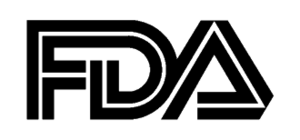
Food and Drug Administration logo (Photo credit: Wikipedia)
As evidenced by the frequent news reports on outbreaks of food-borne illnesses and now hospitalizations and deaths from contaminated medical products, it is apparent that there are major problems within the ranks of the U.S. Food and Drug Administration (FDA).
Some policy analysts attribute the FDA’s deficiencies to “the haphazard manner in which it has grown”. The agency began operations in 1852 with a single chemist working within the U.S. Department of Agriculture (USDA) and operated without regulatory duties until 1906 when news stories about horrible conditions at food-processing plants became the rage. The public uproar from these graphic stories culminated in the passage of the Federal Food and Drug Act. Future instances of health disasters in 1937 and again in the 1950s and 1960s heightened awareness of the need for the FDA to have greater oversight of the food supply and led to the passage of laws regarding pesticides and food and color additives. It is important to note that the FDA still shares the responsibility for the nation’s food supply with the USDA, with the latter agency overseeing the safety of meat and poultry, and the former assuming control of the rest of the food supply.
Repeatedly in reports by the Government Accountability Office (GAO), the FDA has been noted to have “systemic problems . . . that threaten the health of anyone who consumes food in the U.S.” These problems include, but are not limited to:
- An ineffective and confusing inspection process.
- Poor performance in addressing overuse of antibiotics in livestock feed.
- Lack of scientific capacity for the agency to do its job.
- Failure to take enforcement action in more than half of its uncovered violations.
A review of articles and news stories regarding the activities of the FDA reveals that the agency’s inspection and investigation work is severely flawed. Routine inspections are limited and audits sometimes are performed by third-party auditors who advertise work at an”unbelievable price” and give out “superior ratings”.
One major area of concern with the FDA is oversight of seafood sold in the United States. More than 84% of our seafood is imported, with 50% of it coming from Asia. These fish farmers produce large volumes of seafood, including shrimp, catfish and tilapia in polluted and overcrowded ponds and then use antibiotics and fungicides to sterilize the seafood to pass inspection in this country. Amazingly, the FDA is charged with keeping these very same ‘drug-tainted fish” out of the food supply, but as the GAO reports, the agency is failing to do this and really is not even trying. In 2009, the FDA tested only one out of every 1000 imported seafood products for 16 different chemicals. Reports indicate that Canada tested 50 of every 1000 products for more than 40 different chemicals, and Japan tested 110 of every 1000 products for more than 57 chemicals. In addition to posing a health threat to people who eat seafood, the actions of the FDA threaten the very existence of domestic seafood farmers, who must compete with foreign counterparts, who employ cheap labor and who get away with using chemicals that are banned for use by seafood farmers here.
The failure of the FDA to do its job puts the life of every American at stake. For those of us trying to live a green life and eat healthy, this news is particularly unsettling. Every citizen has the right to a safe and healthy food supply. The federal government is obligated to perform dutifully regarding this. We must stand together and demand effective oversight of the nation’s food supply so that we can live green, be green.


